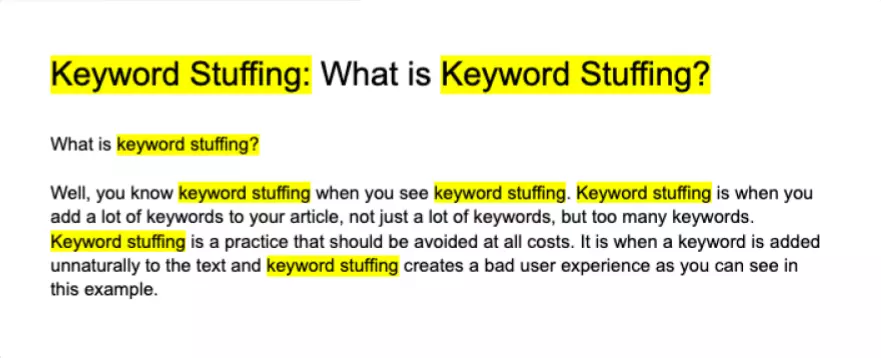Keyword research is the process of finding and analyzing search terms that people enter into search engines with the goal of using that data for a specific purpose, often for search engine optimization (SEO) or general marketing.
Table of Contents
Why is Keyword Research Important for SEO?
Keyword research is important for SEO because it helps you to understand what people are searching for online and how you can create content that is relevant to their needs. This can lead to improved search engine rankings, increased website traffic, and more conversions. Here are some of the specific benefits of keyword research for SEO:
- Improved search engine rankings: Search engines use keywords to index and rank websites. By using relevant keywords in your content, you can help your website to rank higher in search engine results pages (SERPs).
- Increased website traffic: When your website ranks higher in SERPs, it will get more traffic from organic search. This means more people will be able to find your website and learn about your products or services.
- More conversions: High-quality content that is relevant to your target audience’s search queries is more likely to lead to conversions, such as sales, leads, or sign-ups.
- Better user experience: Keyword research can help you to create content that is more relevant and engaging to your target audience. This can lead to a better user experience and more repeat visitors.
- Lower bounce rate: Keyword research can also help you to lower your website’s bounce rate. This is because visitors are more likely to stay on your website if they find the content to be relevant to their needs.
Elements of Keyword Research
There are a number of different elements to keyword research, but the most important ones are:
- Relevance: The keywords you choose should be relevant to your business and the content that you create. If you are targeting the wrong keywords, you are unlikely to attract the right visitors to your website.
- Search volume: The keywords you choose should have a decent search volume. This means that there should be a reasonable number of people searching for these keywords each month. However, it is also important to avoid keywords that have too much competition, as it can be difficult to rank for these keywords.
- Competition: The keywords you choose should have a manageable level of competition. This means that there should be other websites ranking for these keywords, but not too many. If the competition is too high, it will be difficult for you to rank for these keywords.
- Intent: When people search for a particular keyword, what is their intent? Are they looking for information, products, or services? It is important to choose keywords that are aligned with the intent of your target audience.
- Location: If you are targeting a local audience, you may want to choose keywords that include your location.
- Time: If you are promoting a seasonal product or service, you may want to choose keywords that are relevant to that particular time of year.
- Trends: It is also important to be aware of current trends and to choose keywords that are relevant to these trends.
By considering all of these factors, you can choose the right keywords for your business and your SEO campaign.
How Keyword Research Helped My Site’s Traffic Grow?
Keyword research has helped my site’s traffic grow in a number of ways. First, it has helped me to identify the topics and keywords that are most relevant to my target audience. This has allowed me to create content that is more likely to rank well in search engines and attract visitors to my site.
Second, keyword research has helped me to understand the intent of my target audience. This has allowed me to create content that is more likely to meet their needs and provide them with the information they are looking for. This has led to a higher conversion rate and more repeat visitors.
Third, keyword research has helped me to identify long-tail keywords. Long-tail keywords are more specific and less competitive than short-tail keywords. This means that they are easier to rank for and can lead to more targeted traffic.
Here are some specific examples of how keyword research has helped my site’s traffic grow:
- I used keyword research to identify a number of long-tail keywords that were relevant to my target audience. I then wrote blog posts and articles targeting these keywords. As a result, my site’s traffic from organic search increased by 20% in the first month.
- I used keyword research to understand the intent of my target audience when they searched for certain keywords. I then created content that was more likely to meet their needs and provide them with the information they were looking for. This led to a 10% increase in my site’s conversion rate.
- I used keyword research to identify a number of keywords that were relevant to my target audience and had a high search volume. I then created content targeting these keywords and optimized my website for these keywords. As a result, my site’s traffic from organic search increased by 30% in the second month.
Keyword research has been an essential part of my SEO strategy. By conducting thorough keyword research, I have been able to learn what my target audience is searching for online and how I can create content that is relevant to their needs. This has led to improved search engine rankings, increased website traffic, and more conversions.
How to Find Keyword Ideas?
There are a number of ways to find keyword ideas, including:
- Brainstorm a list of seed keywords. These are the main keywords that you want to target with your SEO campaign. You can brainstorm seed keywords by thinking about your business, your products or services, and your target audience.
- Use keyword research tools. There are a number of keyword research tools available, both free and paid. These tools can help you to generate a list of related keywords, as well as provide information on search volume, competition, and other important metrics.
- Analyze your competitors. Look at the keywords that your competitors are using in their titles, meta descriptions, and content. You can also use a tool like SEMrush or Ahrefs to see which keywords your competitors are ranking for.
- Look for trending keywords. Use Google Trends to see which keywords are trending upwards. Targeting trending keywords can be a great way to get more traffic to your website.
- Social Media: Explore social media platforms like Twitter, Instagram, and Facebook to see what topics and hashtags are trending in your industry. These can provide valuable keyword ideas.
How to Analyze Keywords?
Once you have a list of keyword ideas, you need to analyze them to determine which ones are the best fit for your needs. Some factors to consider include:
- Search volume: How many people are searching for this keyword?
- Competition: How many other websites are targeting this keyword?
- Relevance: How relevant is this keyword to your business and target audience?
- Intent: What is the intent of people who are searching for this keyword? Are they looking for information, products, or services?
Once you have analyzed your keywords, you can start to use them in your content and marketing campaigns. This will help you to attract more visitors to your website and improve your search engine rankings.
How to Target Keywords?
To target keywords, you need to use them throughout your content and marketing campaigns without over optimization. This includes using them in your titles, meta descriptions, headings, body text, and image alt text. You should also use them in your social media posts and other online marketing materials.
Here are some specific tips for targeting keywords:
- Use keywords in your titles and meta descriptions. Your titles and meta descriptions are the first things that people see when they search for keywords online. By including your keywords in your titles and meta descriptions, you can increase your chances of appearing in search results.
- Use keywords in your headings and body text. Your headings and body text should be informative and engaging, but they should also include your keywords. This will help search engines to understand what your content is about and index it accordingly.
- Use keywords in your image alt text. Image alt text is a brief description of an image that is displayed when the image cannot be loaded. By including your keywords in your image alt text, you can improve your website’s visibility in image search results.
- Use keywords in your social media posts and other online marketing materials. When you create social media posts and other online marketing materials, be sure to include your keywords. This will help you to reach a wider audience and attract more visitors to your website.
- Be specific. The more specific your keywords are, the more likely you are to target the right audience and achieve your goals.
- Consider long-tail keywords. Long-tail keywords are more specific and less competitive than short-tail keywords. They are also more likely to have a higher conversion rate.
- Use a variety of keyword research tools. No single tool is perfect, so it’s important to use a variety to get the most comprehensive results.
- Monitor your results over time. Keyword research is an ongoing process. You should regularly monitor your results and make adjustments to your keyword strategy as needed.
By following the tips above, you can target keywords effectively and improve your website’s visibility and performance.
How to Prioritize Keywords?
To prioritize keywords, you need to consider a number of factors, including:
- Search volume: How many people are searching for this keyword?
- Competition: How many other websites are targeting this keyword?
- Relevance: How relevant is this keyword to your business and target audience?
- Intent: What is the intent of people who are searching for this keyword? Are they looking for information, products, or services?
- Conversion rate: How likely are people who search for this keyword to convert into customers?
Once you have considered all of these factors, you can start to prioritize your keywords. Here are some tips:
- Prioritize keywords with high search volume and low competition. These keywords are the easiest to rank for and can drive a lot of traffic to your website.
- Prioritize keywords that are relevant to your business and target audience. These keywords are more likely to lead to conversions.
- Prioritize keywords with high intent. These keywords are more likely to lead to people taking the desired action, such as signing up for your email list or making a purchase.
- Prioritize keywords with a high conversion rate. These keywords are more likely to lead to sales and other conversions.
Once you have prioritized your keywords, you can start to use them in your content and marketing campaigns. This will help you to attract more visitors to your website and improve your search engine rankings.
Takeaway
Keyword research is an essential part of any SEO campaign. By conducting thorough keyword research, you can learn what your target audience is searching for online and how you can create content that is relevant to their needs. This can lead to improved search engine rankings, increased website traffic, and more conversions.
I hope this article has given you a good overview of keyword research and how to use it to improve your website’s performance. However, it is important to remember that keyword research is an ongoing process. You should regularly monitor your results and make adjustments to your keyword strategy as needed.



